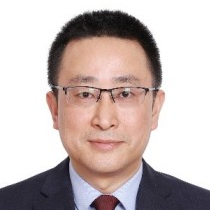Ultrasonic Sensors and Technology for Material Characterization
A special issue of Sensors (ISSN 1424-8220). This special issue belongs to the section "Physical Sensors".
Deadline for manuscript submissions: closed (30 September 2020) | Viewed by 12475
Special Issue Editors
Interests: ultrasound for materials characterization; non-linear interactions and measurements in hostile environements
Interests: ultrasonic nondestructive testing and evaluation; structural health monitoring; signal processing; smart sensors development; electromagnetic inspection
Special Issues, Collections and Topics in MDPI journals
Interests: physical acoustics; nondestructive evaluation; ultrasonics
Special Issue Information
Dear Colleagues,
Ultrasonics has a long history of use in non-destructive evaluation (NDE), including for the detection and characterization of a wide range of discrete anomalies. Particularly with moves to use various forms of advanced manufacturing, including additive manufacturing, solid state bonding and single crystal systems, ultrasonic NDE is being required to provide assessments of material state which assess and mapmaterials and interfaces, including seeking estimates that quantify stress and bond-line strength. This special issue aims to bring together the most recent research where ultrasound is used for material state assessment, including studies using more than one measurement modality.
In this special issue we look forward to receiving papers on a wide range of research topics, but not limited to, the following themes:
- Ultrasonic measurement for material state awareness
- Ultrasound interaction with and characterization of solid state and glued joints/interfaces, including non-linear response
- Modelling of both forward and inverse scattering to assist in developing wave-material interactions for material state assessment
- Sensors, measurement systems and data processing to give enhanced material state assessment and mapping
- New signal processing approaches which improve the capabilities of ultrasonic testing and evaluation
- Ultrasonic phased array based approaches for material state assessment.
For this special issue you are welcome to submit review papers that provide new assessments for aspects of the field or original research which report new measurements, modelling and experimental systems, that investigate material state including the use of ultrasound.
Prof. Dr. Leonard J. Bond
Prof. Dr. Zenghua Liu
Prof. Dr. Nico F. Declercq
Guest Editors
Manuscript Submission Information
Manuscripts should be submitted online at www.mdpi.com by registering and logging in to this website. Once you are registered, click here to go to the submission form. Manuscripts can be submitted until the deadline. All submissions that pass pre-check are peer-reviewed. Accepted papers will be published continuously in the journal (as soon as accepted) and will be listed together on the special issue website. Research articles, review articles as well as short communications are invited. For planned papers, a title and short abstract (about 100 words) can be sent to the Editorial Office for announcement on this website.
Submitted manuscripts should not have been published previously, nor be under consideration for publication elsewhere (except conference proceedings papers). All manuscripts are thoroughly refereed through a single-blind peer-review process. A guide for authors and other relevant information for submission of manuscripts is available on the Instructions for Authors page. Sensors is an international peer-reviewed open access semimonthly journal published by MDPI.
Please visit the Instructions for Authors page before submitting a manuscript. The Article Processing Charge (APC) for publication in this open access journal is 2600 CHF (Swiss Francs). Submitted papers should be well formatted and use good English. Authors may use MDPI's English editing service prior to publication or during author revisions.
Keywords
- ultrasonics
- material characterization
- nondestructive evaluation (NDT)
- material state awareness (MSA)
- modelling
- experiments
Benefits of Publishing in a Special Issue
- Ease of navigation: Grouping papers by topic helps scholars navigate broad scope journals more efficiently.
- Greater discoverability: Special Issues support the reach and impact of scientific research. Articles in Special Issues are more discoverable and cited more frequently.
- Expansion of research network: Special Issues facilitate connections among authors, fostering scientific collaborations.
- External promotion: Articles in Special Issues are often promoted through the journal's social media, increasing their visibility.
- e-Book format: Special Issues with more than 10 articles can be published as dedicated e-books, ensuring wide and rapid dissemination.
Further information on MDPI's Special Issue polices can be found here.








